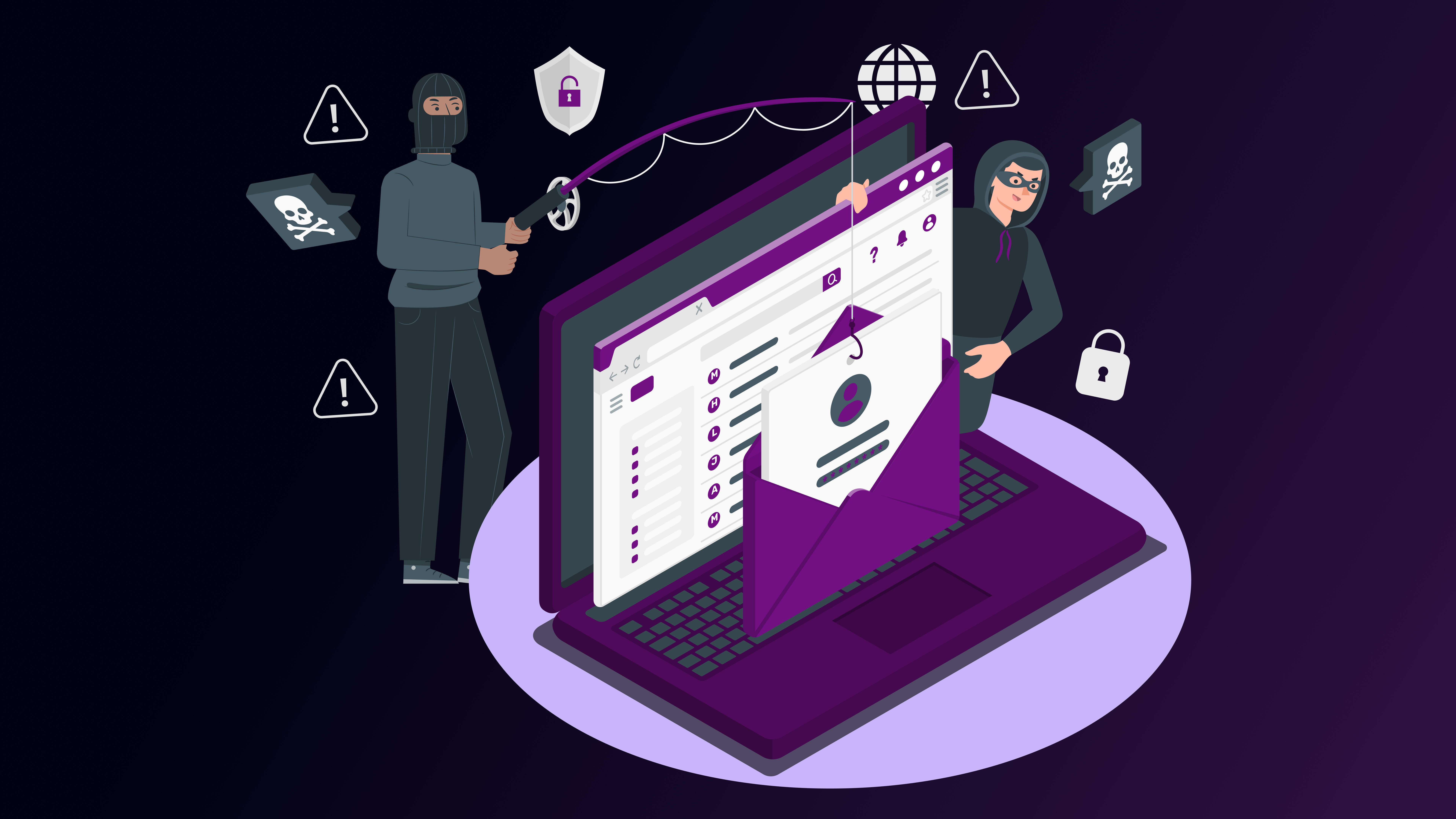You found a niche problem in email security that is not being offered by existing products in the market and decided to build your own.
Congratulations! you took a big step.
You built the product and started selling through word of mouth but obviously you couldn’t reach your sales target.
You want to grow and gain more customers, but the reach is limited.
You try to explain that your product is “the one” but the prospects are not sure. They don’t know how to trust you. They don’t know if the product fits.
And more importantly, your reach is limited to you and your team’s connections.
In this market, where an organization has hundreds of options to choose from, like Proofpoint, SentinelOne, Microsoft, and Google, how do you make them choose yours?
It’s won’t work to just pose yours as a superior product. To be honest, how different can you even make an email security product?
The answer is: combining a good product with great marketing. Even simpler, marketing the hell out of that one feature that makes you different.
In this blog, we will cover how you can create an effective marketing plan for an email security product. Remember, this plan is for startups and organizations below $1M in ARR.
A step-wise marketing framework for your email security product
Step 1: Stop Trying to Sell to Everyone
You can’t market to everyone. Because reaching out to everyone is reaching out to no one!
Even if your product “technically” fits many industries, you must focus. The cybersecurity space is crowded, and unless you’re extremely focused, you’ll get lost in the noise. Answer these questions to narrow it down:
- Which industry sees the highest risk with phishing or BEC (Business Email Compromise)? Legal firms dealing with confidential documents? Healthcare organizations handling patient data? Or fintech companies managing payments and invoices?
- What’s the company size where they start looking beyond Google/Microsoft default protections?
- Who typically makes the buying decision? (CISO, IT Manager, Compliance Officer?)
- Who is your immediate competitor in your target geography?
- What’s your costing like? How competitive can you get?
Speak directly to that industry’s fears, language, and workflows. It’s the only way to resonate early.
Step 2: Decide Your Marketing Model – Offline, Online, or Hybrid?
Here’s where many cybersecurity founders go wrong: they assume everything should be done offline/word of mouth. But this space is changing, and building visibility & credibility needs to go together.
If you’re building something technical and security-focused, people want to see faces, shake hands, and ask questions, but only after discovering it and reading about it.
Which is why you should always choose hybrid marketing.
- Online builds visibility, education, and early inbound traffic.
- Offline builds credibility, authority, and trust (especially at industry events, expos, and roundtables).
A simple strategy?
Run a thought-leadership webinar → capture interest → meet those high-intent leads at a small roundtable or security meetup → convert through personalized demo and trial.

Step 3: Positioning To Make You Trustworthy?
Let’s be honest, email security sounds the same across 90% of product sites. Everyone’s using AI, everyone blocks phishing, everyone gives a user-friendly dashboard, and everyone integrates with Microsoft 365.
So how do you position yourself?
Tell real stories. Share numbers. Show them how you’re different in action.
Examples:
“We ran a campaign for a mid-size law firm and caught 31 phishing attempts in 2 weeks – 14 of which bypassed Microsoft Defender.”
This is where comparison pages work beautifully. Instead of just telling prospects that you’re better than X or Y, show them:
- What you do differently
- What you do faster
- What you automate
- Why you’re easier to use for small IT teams
Build honest comparison pages like:
- Product X vs Your Product
- Why Google Workspace Users Still Need Layered Email Security
- We’re Not Just Another Email Gateway – Here’s Why
These pages work well for SEO and for closing skeptical buyers.
Step 4: Focus on 1–2 Channels That Work for You (Not All of Them)
Marketing doesn’t mean blasting posts on every platform. You’re an early-stage founder. Time and budget are tight. Focus is survival and omnipresence is not required.
Pick one outbound and one inbound strategy.
For most cybersecurity startups:
- Outbound: Cold email or LinkedIn DMs to your ICP (with proof-based messaging)
- Inbound: Regular posts on LinkedIn + a few strategic blog posts (like this one)
You can use the below 3 assets on repeat and keep iterating to improve.
- Landing Page (Built to Convert, Not Just Inform)
- Problem → How your product works → Proof → CTA
- Include: “Watch a 90-sec demo” or “Try campaign in 2 mins” CTA
- One-Pager / PDF
- Who it’s for
- How it works
- Real result
- CTA: “Book a demo”
- 30-Second Demo Video
- Show how fast and simple it is
- Record voiceover + screen walkthrough
- Host it on landing page and LinkedIn
You don’t need a newsletter or podcast right now. You need conversations. Make sure your website reflects the same messaging as your social channels.
Step 5: Build Trust with Weekly Signals
Founders often post once, then go silent for 3 weeks. Or post generic AI articles that feel more like homework than help. And some are so active that they post 2-3 times in a day.
Here’s a better idea: commit to one to three posts a week. Rotate between:
- A phishing attack your product stopped (with redacted screenshots)
- A breakdown of an industry-specific email scam
- A behind-the-scenes of your product building or early traction
- A teardown of another product’s security flaw (be respectful, but bold)
Add meaningful topics you feel are worth mentioning based on the industry, target audience and type of product you have. Keep in mind that you’re not just educating but building signal and trust follows signal.
Step 6: Make it easy to interact with product
Not everyone is ready to book a demo. But they might:
- Try a 30-day phishing campaign
- Download a PDF with phishing templates for their industry
- Attend a niche-focused mini webinar
That’s your warm funnel. Instead of looking 500 leads look for 5 leads who actually care and nurture them gently.
And yes, track things. But keep it simple:
- How many replies you get from outreach?
- How many people land on your page and take action?
- How many users stay after the trial?
These 3 will tell you more than any 10-metric dashboard.
To top this framework, you could choose a content-led marketing partner like Digi-tx, and get our marketing efforts as a digital partnership and a unique revenue-sharing model.
Final Thoughts
Early-stage cybersecurity marketing is less about viral growth and more about building real, steady trust. You don’t need fancy design or a 12-person team or heavy budget to run ads. You have to prove, every week, why you’re worth a conversation.
And if you do that, right growth automatically follows.
P.S. If you want feedback on your positioning, landing page, or early traction strategy drop a link or DM. We’re happy to do a quick teardown.
Would you want us to construct an effective marketing plan for your cybersecurity startup?





